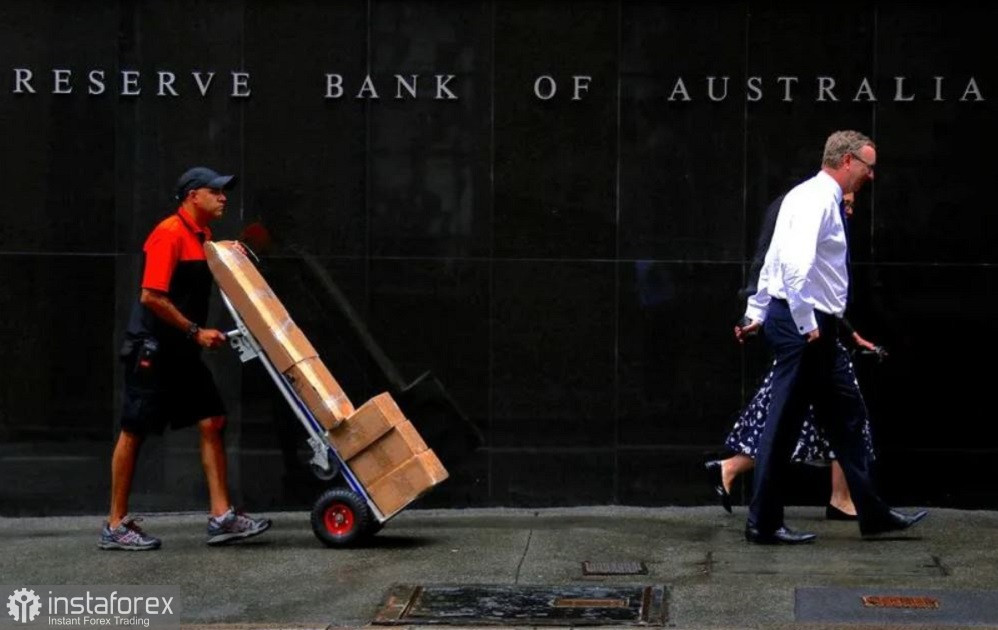The Reserve Bank of Australia summarized the results of its first meeting for this year. Contrary to the forecasts of most experts, the RBA did not take a hawkish stance; the regulator maintained a moderately hawkish position, allowing buyers of AUD/USD to organize a corrective rally. Anticipating, it is necessary to note that what we observe now is indeed a correction, as there are still no prerequisites for a trend reversal. Despite the RBA's nod towards buyers of the pair, the overall fundamental background does not contribute to the strengthening of the Aussie. Therefore, the current rise should be considered an opportunity to open short positions.

But let's get back to the Reserve Bank. In the run-up to the February meeting, the main discussion in the expert community revolved around one key question: would the regulator soften its rhetoric or maintain a hawkish tone, thus ruling out the possibility of a rate cut in the foreseeable future? Almost all macroeconomic reports published during January-December contributed to the rise of "dovish" expectations.
For instance, the disappointing Australian jobs report became the first alarming sign. The employment growth indicator, in particular, collapsed into negative territory, reaching -65,000
against an expected increase of 15,000—the most negative result since October 2021. Other components of the release also landed in the red zone.
However, the Reserve Bank viewed the situation from a slightly different angle: the accompanying statement indicated that labor market conditions remain "more spare than is needed to achieve sustainable full employment and the inflation target." Additionally, the central bank noted an acceleration in wage growth. Although the regulator mentioned that it does not expect further acceleration, overall, the Central Bank evaluated the December report in a hawkish light.
As for inflation, here too, the Reserve Bank assessed the situation in its own way. Recall that the consumer price index in Australia in the fourth quarter declined to 4.1% on an annual basis, while most experts predicted a decrease to 4.3%. The index demonstrates a downward trend for the fourth consecutive quarter. Quarterly, the indicator also entered the red zone, reaching 0.6% (the lowest value since the first quarter of 2021).
The Reserve Bank acknowledged, or rather stated, that inflation in the last quarter of 2023 "continued to ease," and the inflation of goods prices was lower than RBA's November forecasts. However, the central bank also pointed out that service price inflation was decreasing at a slower pace in line with RBA's previous forecasts and remains high.
In other words, despite the downward trend in the CPI, the Central Bank remains concerned about the current level of inflation.
And most importantly, contrary to market expectations, the Reserve Bank did not soften its rhetoric. On the contrary, the regulator even allowed further tightening of the monetary policy. In the accompanying statement, the RBA mentioned that the high-interest rate contributes to establishing a "more sustainable balance between aggregate demand and supply in the economy," hence further rate hikes are not ruled out. Additionally, the central bank tied the fate of the monetary policy to the dynamics of key macroeconomic indicators: "The level of the interest rate that will ensure the return of inflation to the target level in a reasonable timeframe will depend on incoming data and changing risk assessments." This formulation clearly has a hawkish character.
Ahead of the February meeting, Reuters conducted a survey of leading economists who expressed confidence that the RBA would not raise the interest rate further within the current cycle. 29 out of 29 surveyed experts agreed with this assumption. The discussion revolved around the expected date of the first rate cut, but another round of rate hikes was not discussed. Therefore, Tuesday's statement that such an option is "not ruled out at all" was unexpected.
The AUD/USD pair reacted to the results of the February meeting accordingly – rebounding from the support level of 0.6470 (the lower line of the Bollinger Bands indicator on the daily chart), the price rose to the level of 0.6525. In this price range, the upward momentum faded.
The Aussie got a reprieve, but nothing more. The U.S. Dollar Index continues to show an upward trend, reflecting increased demand for the greenback. Strong Nonfarms, hawkish comments from Jerome Powell, and ongoing geopolitical tensions – all these factors support the U.S. currency. The Australian dollar is unable to turn the situation in its favor, even with the RBA's "moderately hawkish position." Moreover, RBA Governor Michele Bullock did not rule out easing monetary policy. According to her, the regulator will discuss this issue when convinced that inflation is returning to its target range on a sustainable basis.
From a technical standpoint, the AUD/USD pair on the D1 timeframe remains between the middle and lower lines of the Bollinger Bands indicator, as well as below all lines of the Ichimoku indicator, which has formed a bearish "Parade of Lines" signal. Considering the current positions, it is advisable to consider short positions with the first target at 0.6470 (the lower line of the Bollinger Bands indicator on the daily chart) and the main target at 0.6400.





















